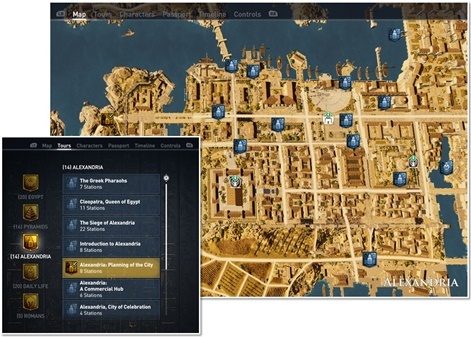Shivani Lamba is the Founder and CEO at Brightlobe.
The serious games industry – a rapidly-emerging sector that is slated to reach a staggering $9.2 billion in value by 2023– is often met with a familiar scepticism: that mobile games with purpose all too often lack playability and entertainment and are by their very nature incapable of attracting a wider audience or becoming cultural phenomena.
The term “serious game” remains relatively obscure in the games industry and there hasn’t been a memorable example in this sector that has attracted a committed following.
The purpose of a serious game varies according to its application and the industry involved. These can be designed to educate and inform as with “edutainment” games, assess and train like in combat training games, or further research objectives.
The charge is this: any game with a purpose that supersedes play has little chance of commercial success.
This will remain true – as long as serious games publishers continue to regard games as a vehicle to achieve other objectives, without pursuing game development as a meaningful endeavour in its own right. Balancing the requirements of serious games and player engagement is an art, and one that can be addressed by paying careful attention to a missing ingredient that the vast majority of these games lack: story.
Balancing acts
There have been recent, successful attempts approaching serious game territory that have achieved some traction among general audiences.
Not unsurprisingly, these have largely come in the form of disguised experiments from inside the games industry. Ubisoft’s decision to create a Discovery Tour Mode for Assassin’s Creed: Origins, for example, provided players’ unbridled access to the landscape of a tremendously successful IP and the opportunity to learn something in the process.
Remembering that serious games are competing on the same ground as entertainment-only fare is the key insight.
Play remains paramount, as it ought to, but Origins’ additional feature – situated nicely within the world of an overarching story set in ancient Egypt – enhances the game’s overall utility and provides an added layer of interactivity separate to typical gameplay. The lesson here is obvious – when narrative and game mechanics work seamlessly in tandem, player engagement is optimised and the objective of a serious game simultaneously achieved.
This is precisely where the challenge serious games face can be overcome: the recognition that with the exception of a few abstract titles, strong gameplay is inextricably linked to good storytelling.
Remembering that serious games are competing on the same ground as entertainment-only fare is the key insight. Players naturally gravitate toward characters they empathise with, a narrative that they can write themselves into, and a world they can lose themselves in.
Begin with the end in mind
A player’s experience is informed in part by two components: a delicately crafted narrative that finds its footing in a well-conceived story bible or script; and visual development.

Serious games in particular can benefit from a longer pre-production phase. Since the mechanics of the game will be set out before a narrative is conceived – which incidentally, is oft-cited as the ideal sequence in which to proceed – these components should be honed to improve engagement and meet the serious game’s underlying objectives.
Crafting a narrative
Serious games developers know what our games ought to do. From here, consider how the subject area featured in the games are contextualised in the real world. A game that sets out to decidedly improve awareness of environmental issues, for example, should actively be informed by real key players in activist and oppositional movements.
Some version of these players are your characters; a specific chapter in the environmental crisis is your story. The more imaginative developer or publisher might take it upon themselves to shape a story around the mechanics. The other route is to hire an experienced game writer to help craft a strategy alongside your team.
The indie title Bio Inc: Redemption, for example, is a biomedical simulator that allows a player to take the role of a medical diagnostician, or death itself. It’s an excellent example of creatively navigating a path through a delicate, complex scientific subject by providing alternate player points of view that are situated within fascinating and realistic scenarios.
The key to immersion where serious games are concerned is in bringing this material closer to the player imperceptibly. Take the time to devise a believable backstory, a challenge for your characters to overcome and a plot-line that guides them through the experience without being mired in overly obvious gameplay mechanics that detract from play.
Visual development
Recognise that the aesthetic of the game can also further your objectives and make a point of experimenting with visual styles before committing to one. Interrogate the process: does the art style and quality detract from our objectives or interfere with gameplay? Does it enhance the message we’re communicating or make key mechanics feel cumbersome?
Nobody will want to play your game if it’s boring. This is where most serious games go completely wrong.
While it is tempting for industry outsiders to emulate games with a popular or unique stylistic approach, it’s worth ensuring that it works as needed in context.
When given due thought, a visual development phase as part of the serious games development process can often enhance the mechanics needed to not only heighten play, but also help meet your underlying objectives.
The successful Kerbal Space Program (KSP) didn’t push the boundaries of gameplay graphics. Given the subject matter, it seems like an obvious route to pursue. In this case, it was a simpler, pared back approach that prioritised the game’s purpose by implementing a UI that encouraged the player to design and then refine their approach.
Hard truths – TL;DR
Nobody will want to play your game if it’s boring. This is where most serious games go completely wrong. To prevent this from happening, don’t assume that as an expert in your chosen industry or field, you’ll also be able to develop a reasonably playable game that has even short-term entertainment value.
Gamers today have exceptionally high standards and demand high production values, like popular free-to-play mobile games like Angry Birds 2 or Candy Crush. Overcome the overconfidence and quietly accept that developing polished quality mobile games is an art unto itself – it deserves significant thought and direction.
The message is this: what you think is valuable to the player – being informed or trained, for example – probably isn’t perceived as valuable. For the most part, people play games to be entertained.
As a serious games developer, if you don’t prioritise gameplay and storytelling, then you need to rethink your approach. There may be an audience for your game, but you’d be wise to keep your aspirations in check. Take the time to design your game and craft a narrative.
Your intended audience will thank you for it.






















